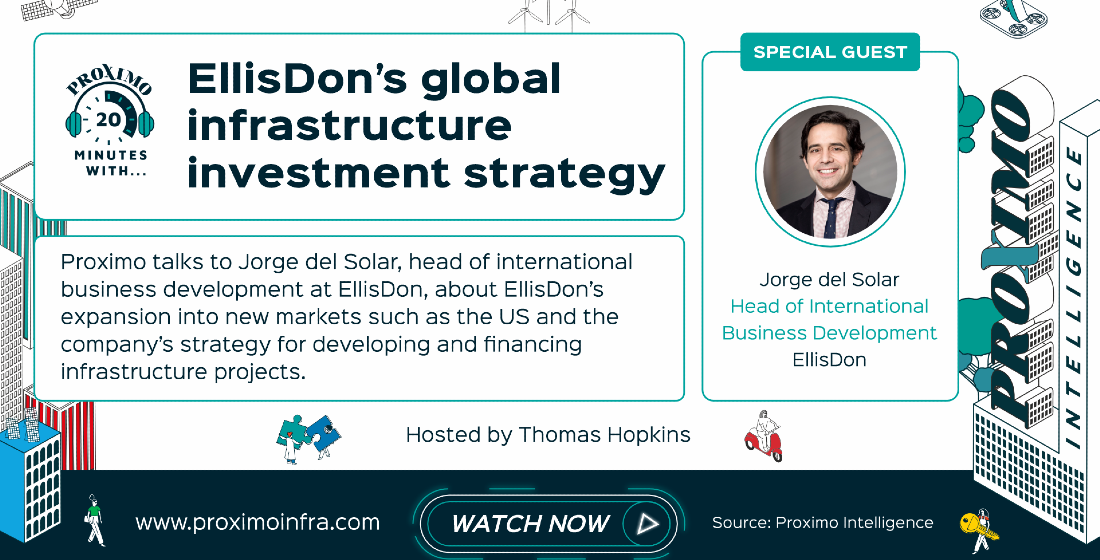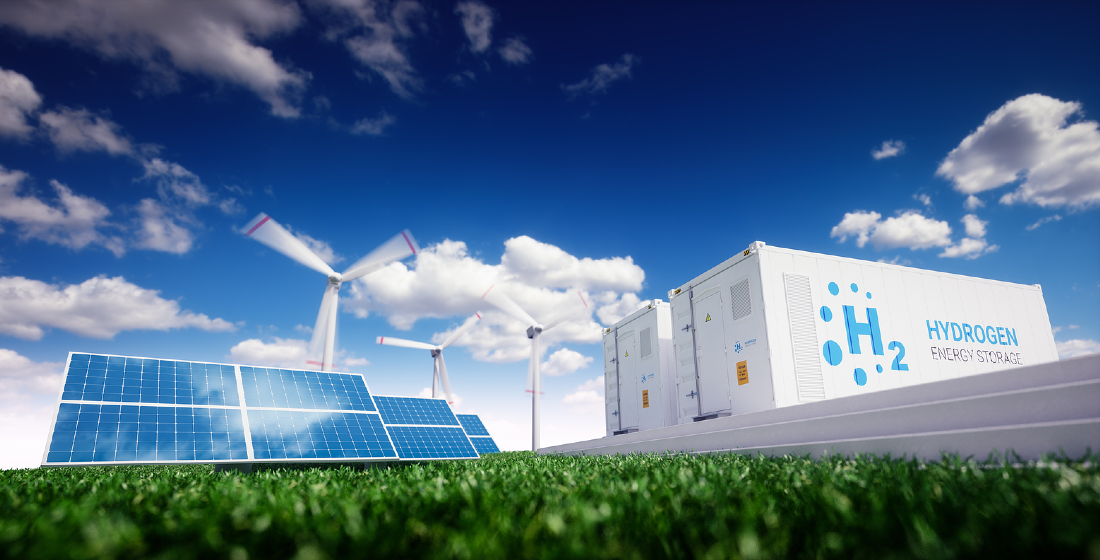How digital infrastructure investors can manage power demand
Power availability for data centres has emerged as the key issue facing digital infrastructure investors. Meeting that demand will require ingenuity and careful planning. By François Feuillat and Ro Lazarovitch, partners, and Rachel Strickland, associate, Bracewell.

Global demand for data storage, processing and distribution is driving a rapid increase in power consumption by data centres. According to a 2023 report by the International Energy Agency, base case annual global electricity consumption for data centres, cryptocurrencies and artificial intelligence in 2026 is projected to exceed 800TWh – up from 460TWh in 2022.
A recent report from McKinsey suggests that global demand for data centre capacity could rise at an annual rate of between 19 and 22% from 2023 to 2030. Emerging technologies like generative AI may compound that demand, with a ChatGPT search reportedly consuming up to 10 times more power than a traditional google search.
This rising power demand is creating three key challenges for digital infrastructure investors:
- Power prices have become increasingly volatile in recent years, driven by geopolitical events, supply chain disruptions and the transition to renewable energy. This price volatility makes it difficult for data centre operators and their customers to forecast and budget their power costs.
- There is also a risk of power prices rising in the medium to long term. As demand for electricity continues to grow, particularly from the data centre industry, supply may struggle to keep pace. According to Rystad, a consulting firm, $3.1 trillion of grid infrastructure investments are required globally before 2030. These grid expansion costs are likely to be passed on to consumers in the form of higher electricity rates, impacting data centre operators and their customers.
- Grid investments are lagging behind increased demand for grid connections. Cleaner generation projects are already needed to replace more polluting sources, support electrification (such as the use of electric vehicles) and support natural population and energy demand growth. Pieter-Jan (PJ) Bouten, a senior managing director at Guggenheim Securities, told us that “the reality is that the grid cannot cope with the unprecedented demand we are seeing for data centres driven by AI. It is a core skillset of a data centre operator to figure out ways of securing grid capacity. However, grid connection queues are becoming more and more an issue, and we see this already impacting investment opportunities and returns.”
Strategies for meeting power demand
Data centre owners have a number of options when it comes to securing reliable and cost-effective electricity for their data centre assets. The most established method is through efficiency projects and power purchase agreements (PPAs). Bouten comments that “although power costs for large hyperscale deployments are passed through to customers, power efficiency is becoming a key focus and innovations like liquid cooling are being used to reduce the power required for cooling. Data centre operators are also entering into long-term PPAs with renewable energy providers to lock in costs over time and make operations and returns more predictable.” Under a PPA (typically ranging from 10 to 20 years), the data centre operator agrees to purchase a fixed amount of electricity at a predetermined rate from an IPP or utility company.
Long-term PPAs are becoming increasingly common in the data centre market. For example, in 2023, a major data centre operator, Equinix, signed 10-year PPAs with renewable energy provider Sonnedix in Spain and Portugal, securing a fixed price for a portion of its power needs from Sonnedix’s solar PV projects. In 2024, Equinix announced the signing of 20-year PPAs with renewable energy developer wpd, supporting the build of seven wind farms in France with over 100MW of capacity.
An alternative to a traditional grid-connected PPA is a behind-the-metre (BtM) PPA, where the data centre operator contracts directly with an independent power producer (IPP) to have power generated on-site or in close proximity to the data centre. This arrangement not only provides price stability but also allows the data centre to avoid grid connection delays, costly grid connection fees and ongoing grid usage charges. “That’s where behind-the-metre power generation could become a real solution”, says Guggenheim’s Bouten. “Some operators are investing in microgrids to obtain direct control over energy sources, like solar or natural gas, as well as in battery energy storage systems (BESS) that can provide immediate backup power and reduce grid dependency.”
BtM PPAs are becoming more popular globally as data centre operators seek to enhance their energy resilience and reduce their reliance on the grid. For instance, in January of this year, Digital Power Optimization (DPO), a developer and operator of green data centres, signed a BtM PPA with a wind farm owner and plans to build data centres behind the metre near six of the seller’s wind farms in Texas.
In addition to these PPA arrangements, some data centre companies are taking a more direct approach by investing in or acquiring power generation assets themselves. A relatively common and straightforward example is UK data centre owner iomart, which this year installed 560 rooftop solar panels at its flagship data centre in Maidenhead.
However, Bouten does not believe this heralds a wholesale move towards data centre operators seeking to own power generation assets. “Operating power generation assets, or indeed any form of on-site power generation, is still a bit of a black box for most data centre operators. So I believe the preference will be for operators to partner and collaborate with renewable energy developers. However, there are a few data centre operators who are already choosing to control their own power on specific sites, especially in markets where it gives them a strategic and financial advantage. A good example is what Edgeconnex is doing in the power-constrained Dublin market, where it is building a gas-powered generation plant alongside its latest data centre development.”
Data centre owners and power infrastructure investors are increasingly finding ways to work together to accelerate the delivery of large, power-hungry data centre campuses required by hyperscalers. On 30 October, KKR and Energy Capital Partners announced a $50 billion strategic partnership designed to deliver scaled data centre and power solutions for hyperscalers and other market participants to support their infrastructure needs in the US.
We expect other infrastructure funds with complementary skillsets to collaborate, though significant amounts of capital are required for both digital infrastructure and the power infrastructure components. These can be capitalised separately to address different investor bases and risk/return profiles - including some of the risks mentioned below - or there may be circumstances where it makes sense for them to be put into the same structure. We expect most investors will keep their investments in separate structures, with framework agreements between them relating to information sharing, coordinating development pipelines and rights of first refusal relating to each other's projects.
Grid and BtM PPAs are not limited to renewable power, and customers might look to access conventional power generation sources. Big tech firms and other data centre owners have net-zero and other sustainability targets, but solar and wind power generation are intermittent. We see increasing interest from data centre owners in BtM arrangements with gas-fired power plants, along with moves to build data centres near nuclear power plants.
In September Microsoft agreed a 20-year PPA with Constellation Energy to help it revive the 835MW Three Mile Island nuclear power plant in Pennsylvania, with the restart planned for 2028, pending regulatory approval. In October 2024, both Amazon and Google announced deals (with Kairos Power and X-Energy, respectively) to invest in the development of small modular reactors (SMRs). The use of SMRs is not expected to start until 2030 at the earliest, and is subject to a number of technical challenges which could delay their commissioning well beyond that date. Data centres are also deploying BESS to alleviate intermittency issues and provide back-up power.
Geothermal power is green and non-intermittent but currently provides a tiny percentage of data centre power requirements. Nonetheless, there are promising developments in locations that support geothermal power. For example, a data centre run entirely on geothermal energy is planned in Kenya as part of a $1 billion investment by Microsoft and Dubai-based AI firm G42.
Legal issues and risks
While long-term PPAs and BtM arrangements can address grid connection, power price and volatility concerns, digital infrastructure owners must navigate several key legal and regulatory issues when pursuing these solutions.
Where a data centre’s corporate PPA is supporting the development of a new energy generation project, or the data centre requires BtM generation or any other works (such as refurbishment) to be complete before energy can be provided to a data centre, there will be an element of project-on-project risk. For example, a risk that the data centre is constructed and completed on time, but that the new energy generation project is not, or vice versa. Careful drafting and negotiation will be required to deal with the consequences of these events and to mitigate them as much as possible.
Electricity consumption profiles for data centres vary depending on the facility and its use, although in most cases data centre owners are incentivised to consistently operate at a high capacity. That consumption profile will more match the generation profile of baseload generation (such as gas-fired and nuclear plants) than intermittent solar or wind generation. Any gaps in the expected electricity consumption and generation profiles, whether due to intermittency of production, periodical maintenance and shutdowns or otherwise, should be identified up front and addressed in documentation.
Owners should also consider up-front how they might future-proof their data centre. This may include technical considerations as well as ensuring that contractual arrangements are flexible enough to accommodate changes in the supply or purchase of electricity.
Developing new power generation assets, whether through a PPA or direct ownership, requires navigating complex planning and permitting processes. Data centre operators must ensure they have the necessary approvals and permits in place, which can vary significantly depending on the location, technology, and scale of the project.
In addition to the administrative process for obtaining a grid connection and the timing challenges, various charges apply including, in the UK, an initial application fee for connection (ranging in price dependent on zone and base power) and ongoing connection charges to connect to the National Electricity Transmission System (NETs).
On 5 November, the UK government and the network regulator Ofgem outlined in an open letter their intention to reform the grid connection process. This reform process is not complete, but we expect large projects such as hyperscale data centres backed by credible owners and operators to benefit from these reforms as they will be in a position to advocate for inclusion in the government's new strategic plan and demonstrate a track record of reliability and speed of execution.
In the European Union, the process of securing grid connections is largely harmonised under the EU's Network Codes, which set technical and operational requirements for grid access. However, data centre operators still face delays and challenges, particularly in areas with limited grid capacity.
Sharing risks and workloads is key
By leveraging long-term PPAs, BtM arrangements and direct investments in power generation assets, and by finding partners with complementary skillsets, digital infrastructure owners can secure reliable and cost-effective electricity for their data centre investments. However, adding a large and complex power element to a data centre project adds a measure of risk. Many investors will want to rely on partners who take much of that risk off their hands. Others will see an opportunity.





